Behavioral variant frontotemporal dementia as a model for understanding the cognitive and cerebral determinants of verbal creativity
- PMID: 40849488
- PMCID: PMC12374279
- DOI: 10.1186/s12993-025-00292-z
Behavioral variant frontotemporal dementia as a model for understanding the cognitive and cerebral determinants of verbal creativity
Abstract
Background: Although creativity is an essential cognitive function to adapt to an ever-changing world, its neurocognitive and cerebral bases still need clarification. Current models highlight the interaction between associative and executive processes underpinned by the default mode (DMN), executive control (ECN) and salience networks (SN). Furthermore, recent neuroimaging studies highlight the key role of the prefrontal cortex (PFC), located at the crossroads of these networks. Hence, behavioral variant frontotemporal dementia (bvFTD), characterized by progressive neurodegeneration principally impacting the prefrontal cortex and the intrinsic connectivity of these three creativity-related networks, represents a unique model to study creativity. In this study involving 14 bvFTD patients and 20 matched controls, we used a simple word-to-word association task (FGAT) to explore the specific cognitive processes involved in remote thinking, i.e., the production of creative semantic associations. Using voxel-based morphometry, we uncovered critical brain regions for each component and then characterized these regions' intrinsic connectivity profiles using resting-state functional connectivity in healthy controls.
Results: We dissociated four key cognitive components underlying remote thinking: spontaneous associative thinking, inhibition of unoriginal responses, intentional remote associative thinking, and verbal initiation; and replicated them in three independent datasets. Spontaneous associative thinking relied on temporal and cerebellar regions involved in low-order and automatic semantic processing, connected with the DMN, ECN and SN. Inhibition of prepotent unoriginal responses depended on key nodes of the SN. The ability to intentionally generate remote semantic associations was underpinned by key regions of the DMN. Finally, initiation of verbal responses relied on the right dorsolateral PFC, connected to the ECN. BvFTD patients were impaired in the last three components. Two components, cognitive inhibition and intentional remote thinking, mediated the link between atrophy in critical regions and an independent measure of creative abilities.
Conclusions: These findings advance our understanding of creative neurocognition, distinguishing components of creative thinking and clarifying their critical cerebral bases, and participate in the characterization of creativity impairment in patients with bvFTD.
Keywords: Creativity; Executive functions; Frontotemporal dementia; Remote thinking; Resting state functional connectivity; Semantic associations; Voxel-based morphometry.
© 2025. The Author(s).
Conflict of interest statement
Declarations. Ethics approval and consent to participate: This study is part of the pre-registered ECOCAPTURE study (INSERM, C16-87, clinicaltrials.gov: NCT03272230). An approved ethics committee authorized the study (Comité de Protection des Personnes N°17–31; ID RCB: 2017-A00416-47), all participants provided written informed consent, and anonymity was preserved, in accordance with French regulations and the Declaration of Helsinki. Consent for publication: Not applicable. Competing interests: The authors declare no competing interests.
Figures
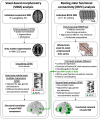
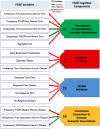

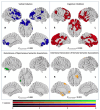
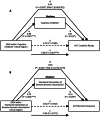
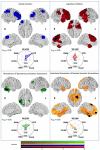
References
-
- Runco MA, Jaeger GJ. The standard definition of creativity. Creativity Res J. 2012;24:92–6.
-
- Ovando-Tellez M, Bieth T, Bernard M, Volle E. The contribution of the lesion approach to the neuroscience of creative cognition. Curr Opin Behav Sci. 2019;27:100–8.
-
- Abraham A. The neuropsychology of creativity. Curr Opin Behav Sci. 2019;27:71–6.
-
- de Souza LC, Guimarães HC, Teixeira AL, Caramelli P, Levy R, Dubois B et al. Frontal lobe neurology and the creative mind. Front Psychol [Internet]. 2014 [cited 2020 Feb 27];5. Available from: http://journal.frontiersin.org/article/10.3389/fpsyg.2014.00761/abstract - PMC - PubMed
-
- Fusi G, Crepaldi M, Colautti L, Palmiero M, Antonietti A, Rozzini L et al. Divergent Thinking Abilities in Frontotemporal Dementia: A Mini-Review. Front Psychol [Internet]. 2021 [cited 2021 May 4];12. Available from: https://www.ncbi.nlm.nih.gov/pmc/articles/PMC8085258/ - PMC - PubMed
MeSH terms
Grants and funding
LinkOut - more resources
Full Text Sources
Miscellaneous

